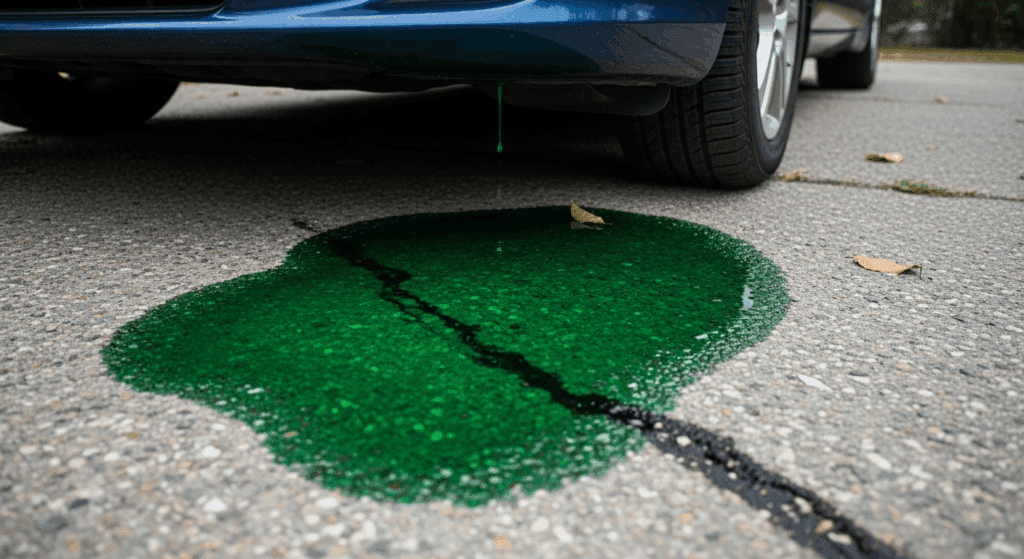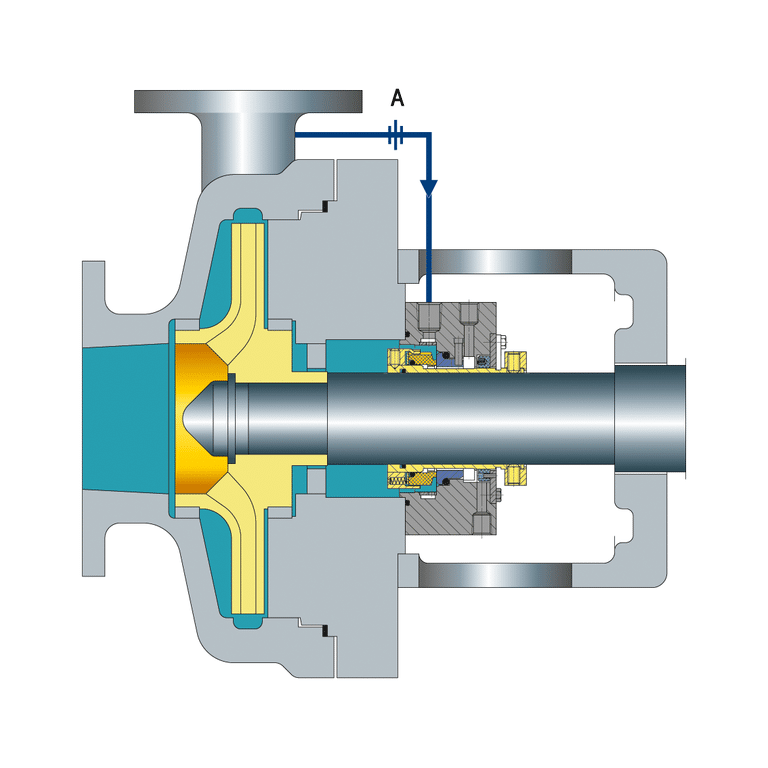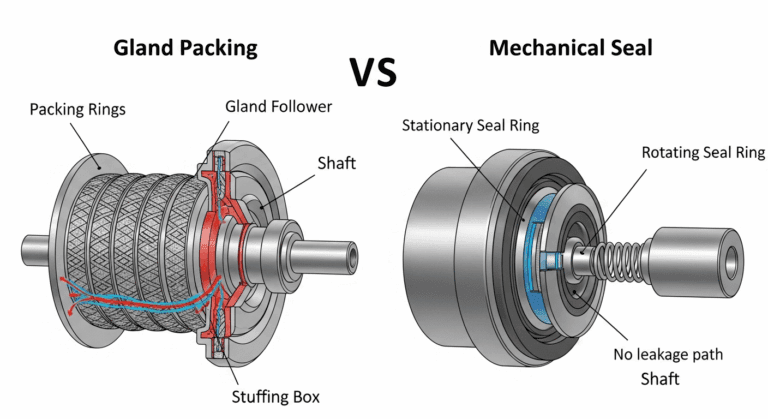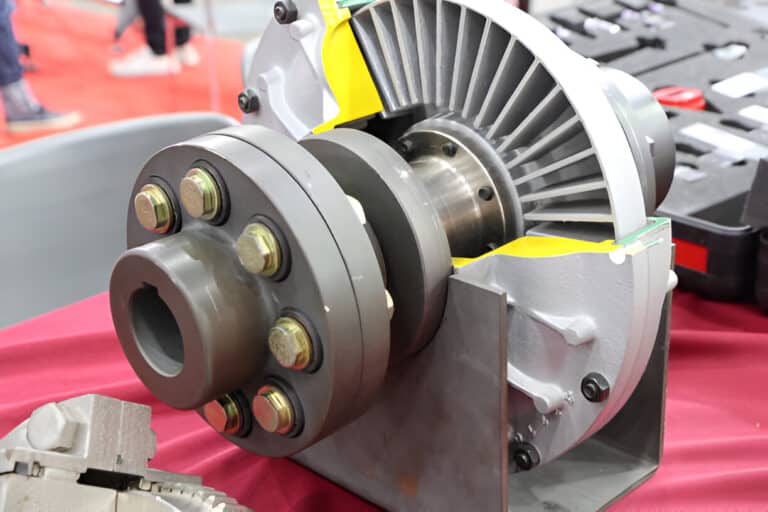You can fix a leaking water pump seal by either replacing just the seal itself (if the pump is otherwise in good condition) or replacing the entire water pump assembly. Most mechanics recommend replacing the whole pump since the labor cost is the same either way, and a worn seal often indicates the pump is nearing the end of its life.
Here’s the reality: fixing a water pump seal isn’t a quick roadside repair. It requires draining your cooling system, removing several components to access the pump, and having the right tools. But if you’re mechanically inclined and have a Saturday to spare, you can save yourself $300-500 in labor costs.

How to Tell If Your Water Pump Seal Is Actually Leaking
A leaking water pump seal leaves specific clues that are hard to miss once you know what to look for.
- Coolant puddle under your car: The most obvious sign is a puddle near the front-center of the engine. It’ll be green, orange, red, or pink depending on your coolant type.
- Visible coolant streaks or deposits: You might notice coolant streaks or crusty deposits on the pump itself.
- Whining or grinding noise: Listen for these sounds from the front of your engine. A failing seal often means the pump’s bearings are going bad too.
- Wobbling water pump pulley: With the engine off, grab the water pump pulley. If it wobbles, that confirms both the seal and bearings are shot.
- Rising temperature gauge: Your temperature gauge climbing higher than normal is another red flag. A leaking seal means you’re losing coolant, which leads to overheating.
Step-by-Step Guide to Fixing a Water Pump Seal
Before you start, know that this job takes 3-6 hours depending on your car and experience level. You’ll need basic hand tools, a drain pan, new coolant, and either a seal kit or new water pump.
Step 1: Drain the Cooling System
Let your engine cool completely (at least 2 hours after running). Place a drain pan under the radiator and open the drain plug at the bottom. Remove the radiator cap to help it drain faster.
Step 2: Remove the Drive Belt
Locate the tensioner pulley and use a wrench to release tension. Slip the belt off the water pump pulley. Take a photo first so you remember the routing.
Step 3: Disconnect the Radiator Hoses
Loosen the clamps and pull off any hoses connected to the water pump. Expect some coolant spillage even after draining.
Step 4: Remove the Water Pump
Unbolt the pump from the engine block. You’ll typically find 4-6 bolts. The pump might be stuck due to old gasket material, so gently pry it loose with a flathead screwdriver.
Step 5: Install the New Seal or Pump
If replacing just the seal, carefully pry out the old one and press in the new seal using a socket that matches its outer diameter. For a new pump, clean the mounting surface thoroughly and install with a new gasket.
Step 6: Reassemble Everything
Bolt the pump back on, torquing to manufacturer specs (usually 15-20 ft-lbs). Reconnect hoses, reinstall the belt, and refill the cooling system with fresh coolant.
Step 7: Bleed Air from the System
Start the engine with the radiator cap off. Let it warm up and watch for air bubbles. Add coolant as the level drops. Once the thermostat opens (you’ll see coolant flowing), replace the cap.
When Should You Replace the Entire Pump Instead?
Replace the whole pump if it’s over 60,000 miles old or shows any wobble when you check the pulley. The seal kit might cost $20 while a new pump runs $50-150, but you’re already doing all the labor.
Most mechanics follow this rule: if you’re going through the trouble of removing the pump, just replace it. The peace of mind is worth the extra $30-100.
FAQs
How much does it cost to fix a water pump seal?
A DIY seal replacement costs $20-30 for the seal kit plus coolant. Professional repair runs $400-800 because shops typically replace the entire pump, and labor accounts for most of the cost.
Can I drive with a leaking water pump seal?
You can drive short distances if you keep the coolant topped off and watch the temperature gauge closely. However, it’s risky—if the seal fails completely, you’ll overheat within minutes and potentially damage your engine.
How long do water pump seals typically last?
Water pump seals usually last 60,000-90,000 miles. Factors like coolant quality, driving conditions, and maintenance habits can significantly affect their lifespan. Cars driven mostly on highways tend to get more miles from their seals.
Can stop-leak products fix a water pump seal?
Stop-leak products might temporarily slow a minor leak, but they’re not a real fix for water pump seals. They can also clog your radiator and heater core. It’s better to fix the problem properly than risk more expensive damage.




